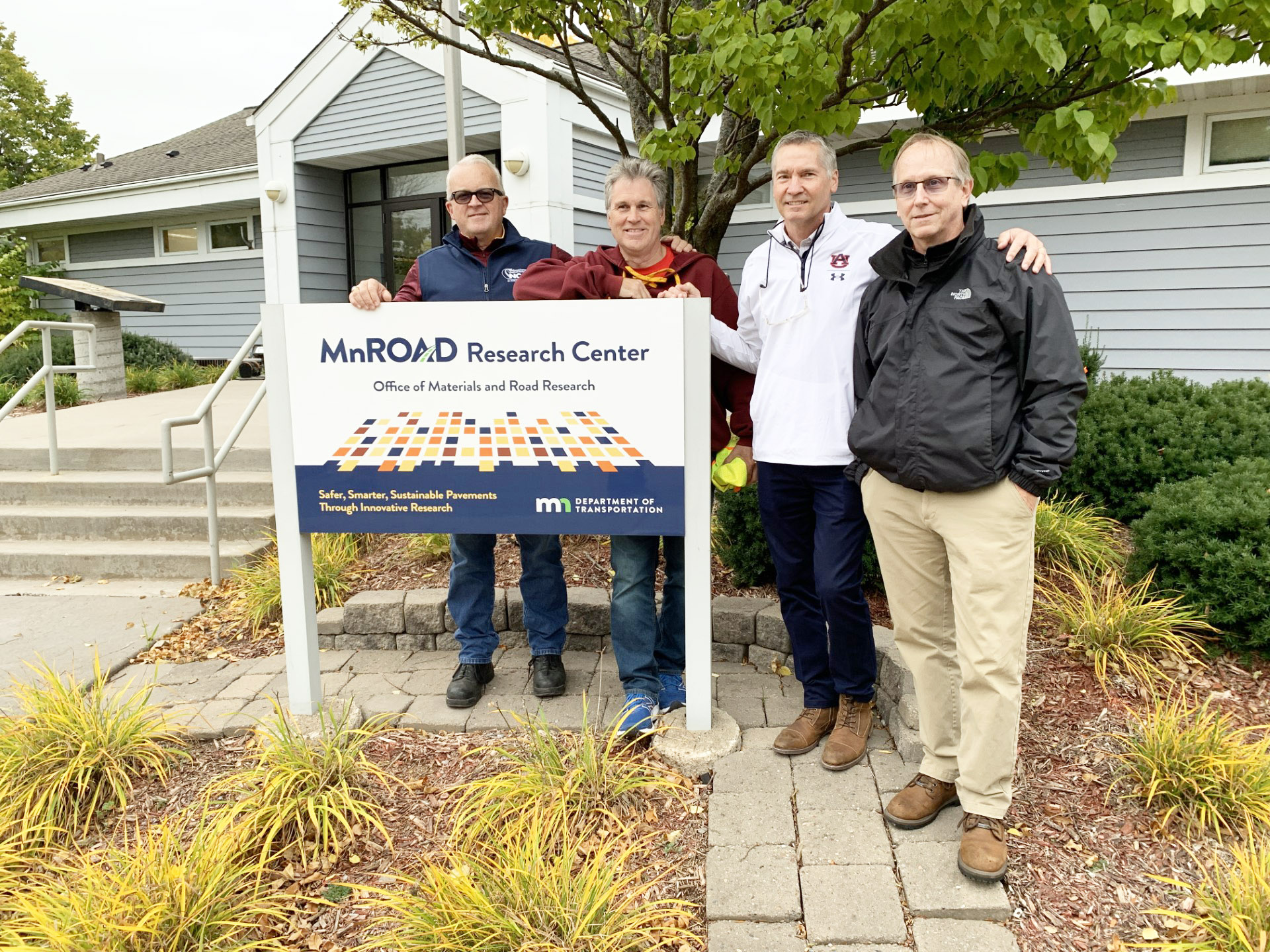MnROAD Partnership


NCAT partners with MnROAD, a full-scale pavement test road owned and operated by the Minnesota Department of Transportation, to evaluate pavement experiments in both the northern and southern climates.
NCAT and MnROAD operate the nation’s two largest full-scale pavement testing facilities where live trafficking under actual climate conditions provides an authentic environment for researchers to study.
Evaluating test sections in these two climates contributes to the development of more durable, safe, and cost-effective pavements because we can evaluate the performance of materials and pavement designs under conditions ranging from extreme summer heat to extreme winter cold. Experiments in both regions allow for more robust analysis that enables tailored solutions for region-specific conditions.
The NCAT-MnROAD partnership began in 2015 and focuses on two national research needs, including pavement preservation experiments, validation of BMD cracking tests, and evaluation of innovative asphalt mixture additives.
Pavement Preservation Experiments
More than 30 pavement preservation treatments were installed in Alabama and Minnesota using materials appropriate for the respective climates. The northern pavement preservation experiment sections are located northeast of Minneapolis, on U.S. Route 169, a high-volume road, and County State Aid Highway (CSAH) 8 in Mille Lacs County, a low-volume road. Additionally, a variety of cold recycle sections with thin overlay surfaces were installed on 70th Street just outside the entrance to MnROAD in 2019. The Pavement Preservation Group pooled-fund study initially involved treatment selection and design, test site selection and layout, construction scheduling and technical assistance, and quality assurance testing. Currently, the pooled-fund study includes ongoing performance monitoring, analysis to quantify the life-extending benefits of the pavement preservation treatments, and dissemination of findings through workshops, webinars, reports, conference presentations, and open-access web-based tools.
Validation of Cracking Tests
For more than two decades, pavement engineers across the U.S. have recognized that asphalt pavements were not performing to expectations for durability. The Superpave system, implemented in the mid to late 1990s in most states, had effectively solved rutting issues, but new pavements and overlays were not performing well with regard to cracking and raveling. Highway agencies began exploring ways to increase the asphalt contents of mixes by tweaking volumetric requirements, adjusting compactive efforts, and tightening down on policies related to aggregate testing. Some states funded research with their local universities to develop new tests to identify mixtures that were prone to premature cracking. After another 10 years of these efforts, very little real progress had been made. Although several new cracking tests had been recommended by researchers, most had not been validated with field performance, and there was no consensus on which test (or tests) were suitable for day-to-day usage.
In 2015, when NCAT and MnROAD began their partnership to address national research needs, one of those needs was field validation experiments for cracking tests. NCAT built test sections to focus on top-down, load-related cracking. MnROAD’s experiment focused on thermal cracking.
Numerous laboratory cracking tests were evaluated in the experiments. In addition to assessing which tests best correlated to the two types of cracking in the test sections, the researchers evaluated other important factors for selecting the tests including, time to prepare specimens and complete the tests, variability of results, and equipment costs.
The results of the NCAT top-down cracking experiment were documented in Chapter 2 of NCAT report 21-03.
Additive Group Experiment
Highways agencies are routinely approached by vendors who claim that their asphalt mixture additive improves pavement performance and is of great value. Independent, peer-reviewed research is needed to evaluate the claims and build an objective framework to evaluate future asphalt mixture additives. The Additive Group (AG) experiment is designed to meet this need.
At the NCAT Test Track, relatively thin pavement structures were built with mixtures containing a variety of mixture additives that include recycled tire rubber, recycled plastic, and high-strength fibers. The service life of each structure under accelerated traffic is compared to a control section with the same mix design without additives. The difference in the fatigue life of the experimental test sections compared to the control sections will indicate the value of the additive. NCAT researchers also use response data from instrumentation installed in the test sections along with advanced lab testing of the asphalt mixtures and engineering models of the pavements to predict how the mixtures will perform in different environments and loading conditions.
At MnROAD, the same set of asphalt mixture additives was included in the surface layer of new test sections built to assess how well the mixtures hold up to reflection cracking and thermal cracking. Comparing the performance of the experimental mixtures compared to a set of control mixtures at MnROAD will complement the results of the NCAT test sections and provide a more complete picture of how the additives affect an asphalt pavement’s resistance to the three most common forms of cracking.
Deliverables